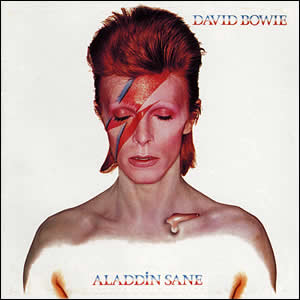Diamond Dogs by David Bowie
Buy Diamond Dogs Following the successful album and tours of the conceptual The Rise and Fall of Ziggy Stardust and the Spiders from Mars, David Bowie decided to try another rock-opera-style piece based […]

Buy Diamond Dogs Following the successful album and tours of the conceptual The Rise and Fall of Ziggy Stardust and the Spiders from Mars, David Bowie decided to try another rock-opera-style piece based […]

Buy Aladdin Sane The sixth studio album by David Bowie, 1973’s Aladdin Sane furthers the narrative, begun on the previous year’s hit album The Rise and Fall of Ziggy Stardust and the Spiders […]